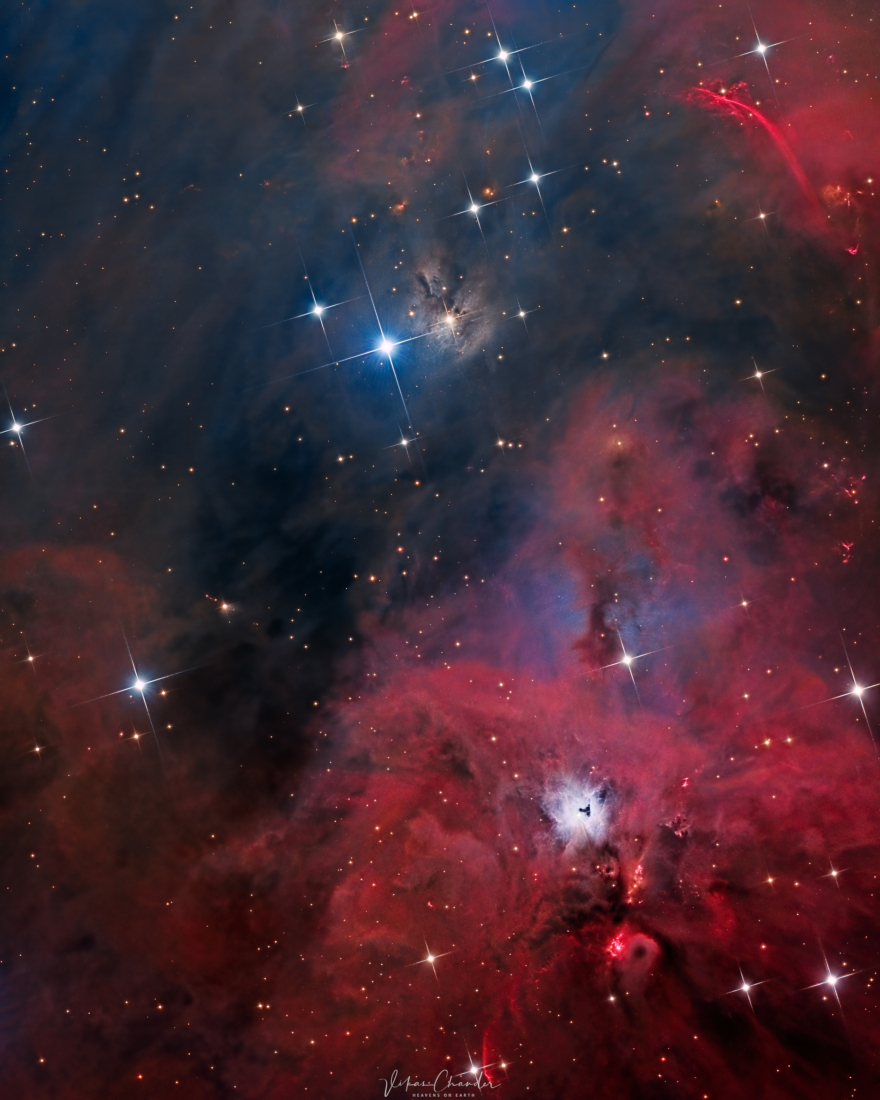안녕하세요 오늘은 NASA에서 어떤 우주의 모습을 비춰줄까요?
먼저 사진부터 감상하시죠!

이 사진의 제목은 South of Orion 입니다. NASA에서 공식적으로 제공한 설명을 보시죠.
South of the large star-forming region known as the Orion Nebula, lies bright blue reflection nebula NGC 1999. At the edge of the Orion molecular cloud complex some 1,500 light-years distant, NGC 1999's illumination is provided by the embedded variable star V380 Orionis. The nebula is marked with a dark sideways T-shape at center right in this telescopic vista that spans about two full moons on the sky. Its dark shape was once assumed to be an obscuring dust cloud seen in silhouette. But infrared data suggest the shape is likely a hole blown through the nebula itself by energetic young stars. In fact, this region abounds with energetic young stars producing jets and outflows with luminous shock waves. Cataloged as Herbig-Haro (HH) objects, named for astronomers George Herbig and Guillermo Haro, the shocks have intense reddish hues. HH1 and HH2 are just below and right of NGC 1999. HH222, also known as the Waterfall nebula, looks like a red gash near top right in the frame. To create the shocks stellar jets push through the surrounding material at speeds of hundreds of kilometers per second.
오늘도 광활한 우주 앞에 인간이 얼마나 작은 존재인지 깨닫게 되네요.
저는 내일도 더 좋은 사진과 함께 돌아오겠습니다, 행복한 지구여행 되세요!
'나사사진' 카테고리의 다른 글
| NASA 오늘의 사진 (2022-01-29) (0) | 2022.01.29 |
|---|---|
| NASA 오늘의 사진 (2022-01-27) (0) | 2022.01.28 |
| NASA 오늘의 사진 (2022-01-26) (0) | 2022.01.26 |
| NASA 오늘의 사진 (2022-01-25) (0) | 2022.01.25 |
| NASA 오늘의 사진 (2022-01-24) (0) | 2022.01.24 |



